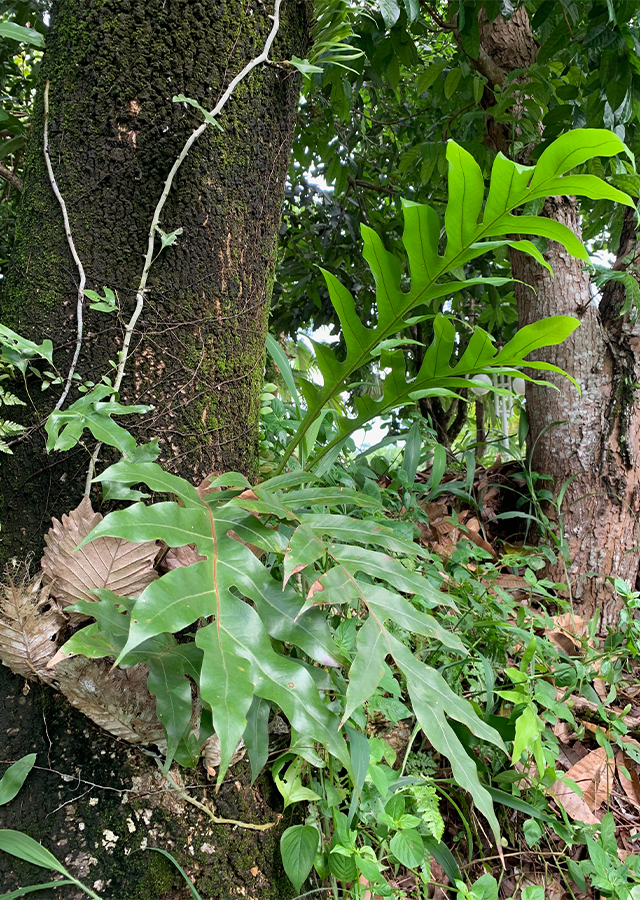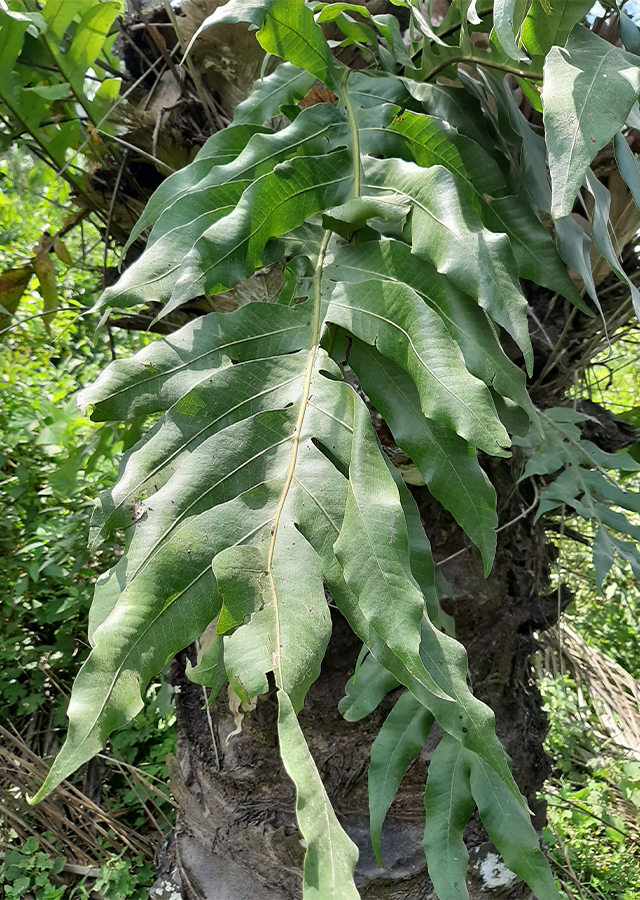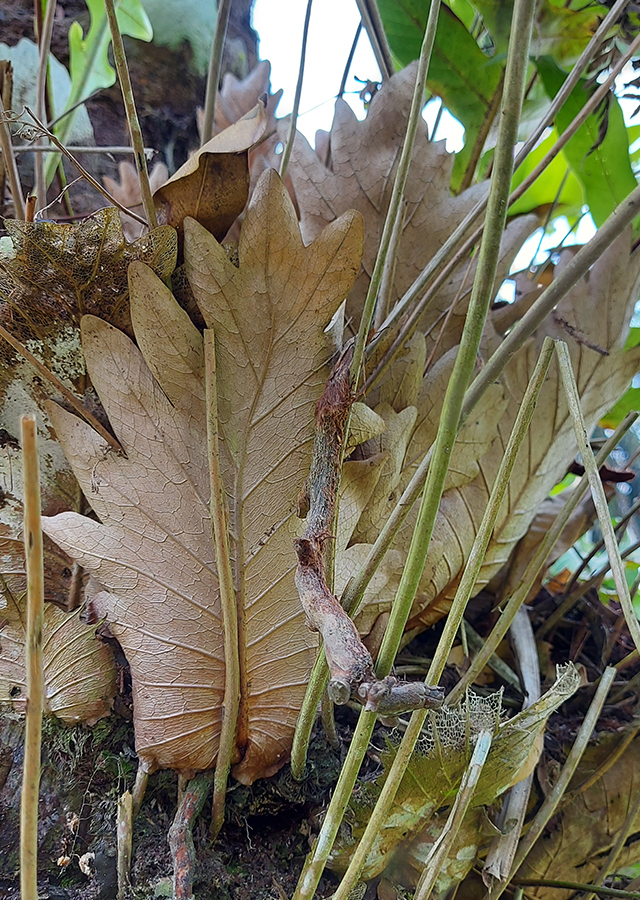Oak Leaf Fern
Drynaria sparsisora (Desv.) T. Moore
Polypodiaceae
Location in our garden
Principal



Synonym
Aglaomorpha sparsisora (Desv.) Hovenkamp & S.Linds.
Drynaria linnaei Bedd.
Polypodium linnei Bory
Habitus
Fern. An annual shrub, epiphytic fern with a long, creeping rhizome, growing up to 1 m tall
Part Used
Leaves
Roots
Rhizome
Growing Requirements
Need Shade
Habitat
Forest
Rocky Areas
Shrublands
Overview
The greatest diversity of Drynaria is found in continental Asia, especially in China. It is found from Sri Lanka, throughout South-East Asia to Southern China, tropical Australia and Polynesia. Most species of Drynaria are quite often grown as ornamentals, used medicinally or as a stimulant and as a vegetable.
Vernacular Names
Kakayan (Malaysia), Kabkab (Philippines), Kuut hok (Thailand), Talwala (New Guinea).Akar Kusu (Mal.), Palinggir (id.), Paku Langlayangan (Sund.), Simbar layangan (Jaw.), Simbar (Bal.), Barang-Barang (Mak.), Lilianga (Ternate). Prosea: Kabkab, apatpat, dibatu, glemu (Philipp.), Kuut hok, Phang-ngaa, wean ngun kwak (Thai.), talwala (New Guinea), Kangkoms (Papua).
Agroecology
This species is commonly found attached on the tree trunk, old walls which are either shaded or exposed, though sometimes it becomes terrestrial in habit because of the creeping branched. This can be located at an altitude of 320–847 m above sea level.
Morphology
- Roots - adventitious, fibrous, and dark brown.
- Rhizome - fleshy, long-creeping, woody, covered with imbricate pale brown palea, rhizome 1-3 cm in diameter, smooth and snake-like when old, covered with dark scale bases, the narrow apical portions having broken off.
- Leaves - erect foliage and its irregularly arranged sori, fertile fronds green, 45-60 cm long, leathery, shiny, hairs abundantly distributed at the lower surface. Sterile fronds green when young and shiny brown when mature, 5-12 cm wide and 10-15 cm long.
- Spores - with spines.
Cultivation
- By spores.
- By division of the rootstock. Larger divisions with shoots establish best, but even smaller sections without shoots are able to produce adventitious shoots.
Chemical Constituents
Tannins, flavonoids, steroids, polyphenol, kardenofin, terpenoids, alkaloids, saponins.
Traditional Medicinal Uses
Medicinal Uses
- The rhizomes is used to treat similar diseases such as diarrhea and gonorrhea.
- The rhizomes and the fronds showed similar antioxidant activity.
- The fronds showed remarkable tyrosinase enhancement.
- The rhizome is astringent, bitter and tonic to the bowels. It is used in the treatment of typhoid, dyspepsia and coughs.
Traditional Uses
- In Indonesia, the bruised rhizome is used externally to reduce swollen limbs and to mature boils.
- In the Philippines the roots are applied against snake bites.
Part Used
Reference Sources
Heyne, K. 1987. Tumbuhan Berguna Indonesia. Badan Litbang Kehutanan Jakarta. Jilid 1. p. 89.
Praptosuwiryo, T.N. 2003. Drynaria (Bory) J. Smith. In: de Winter, W.P and Amoroso, V.B. (Editors): Plant Resources of South-East Asia No 15(2). Cryptogams: Ferns and Fern Allies. Prosea Foundation, Bogor, Indonesia. p. 100-105.


